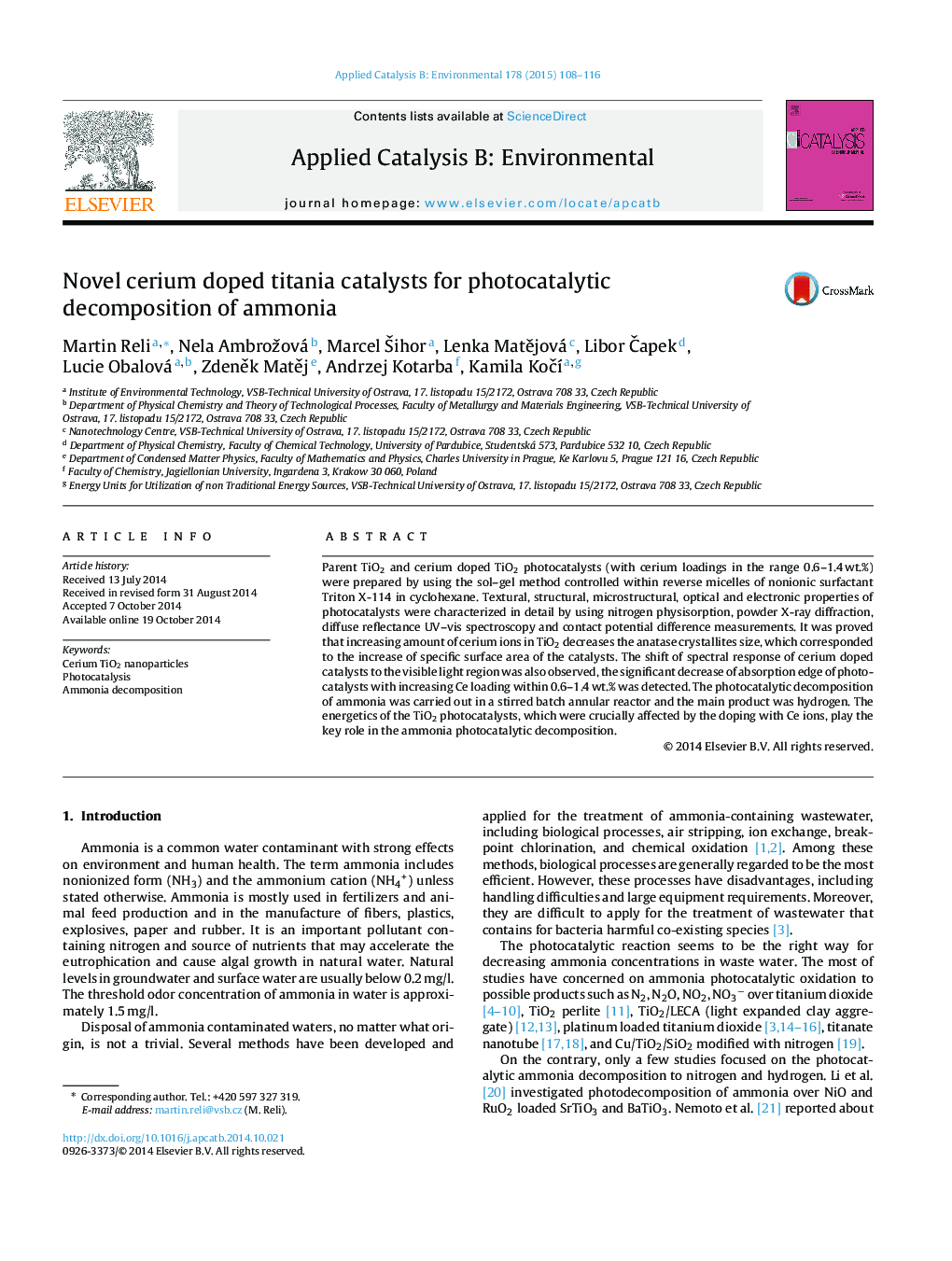| Article ID | Journal | Published Year | Pages | File Type |
|---|---|---|---|---|
| 44949 | Applied Catalysis B: Environmental | 2015 | 9 Pages |
•Ce/TiO2 was examined for NH3 photocatalytic decomposition for the first time.•The activity decreased in order 1.2 wt.% Ce>1.4 wt.% Ce>0.6 wt.% Ce>0 wt.% Ce.•The lowest value of catalyst work function (for the optimal Ce content) correlates with the highest yield of H2.•Energy of electrons is the crucial parameter in ammonia photocatalytic decomposition.
Parent TiO2 and cerium doped TiO2 photocatalysts (with cerium loadings in the range 0.6–1.4 wt.%) were prepared by using the sol–gel method controlled within reverse micelles of nonionic surfactant Triton X-114 in cyclohexane. Textural, structural, microstructural, optical and electronic properties of photocatalysts were characterized in detail by using nitrogen physisorption, powder X-ray diffraction, diffuse reflectance UV–vis spectroscopy and contact potential difference measurements. It was proved that increasing amount of cerium ions in TiO2 decreases the anatase crystallites size, which corresponded to the increase of specific surface area of the catalysts. The shift of spectral response of cerium doped catalysts to the visible light region was also observed, the significant decrease of absorption edge of photocatalysts with increasing Ce loading within 0.6–1.4 wt.% was detected. The photocatalytic decomposition of ammonia was carried out in a stirred batch annular reactor and the main product was hydrogen. The energetics of the TiO2 photocatalysts, which were crucially affected by the doping with Ce ions, play the key role in the ammonia photocatalytic decomposition.
Graphical abstractFigure optionsDownload full-size imageDownload as PowerPoint slide
